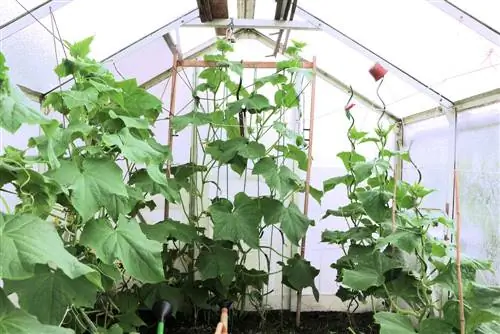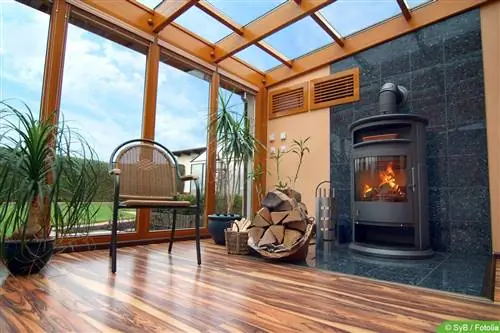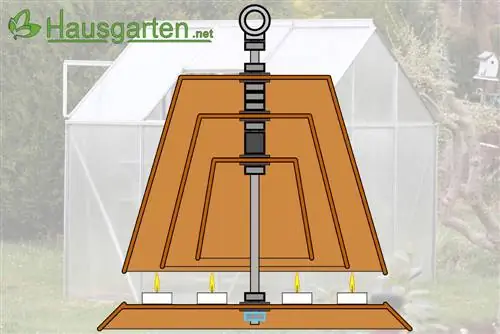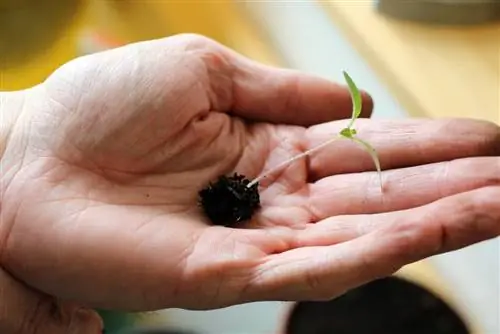- Author admin [email protected].
- Public 2023-12-17 03:39.
- Last modified 2025-01-24 12:45.
Heat-loving plants thrive particularly well in greenhouse conditions. You can garden regardless of the weather and pests are literally left out. Well-thought-out planning is the be-all and end-all. This is the only way to fully utilize all of its advantages. But what should you pay attention to when planting in a greenhouse and choosing plants?
Different types of greenhouses
First and foremost, a greenhouse should impress with its functionality, because not every model can be planted in the same way. A distinction is made between unheated and heated houses. Unheated ones are most often used to grow vegetables and herbs from spring to fall. On the other hand, a heated warm house or greenhouse opens up planting options even during the cold season. Be it for growing young plants of summer vegetables and summer flowers or for exotic greenhouse plants. Greenhouses should always have multiple ventilation options to avoid heat build-up.
Often, especially with smaller greenhouses, you tend to want to make the most of every centimeter. This means that the plants are far too dense and cannot develop properly. Planting different species indiscriminately should also be avoided. Otherwise competition for water and nutrients and fungal infestation can occur. The best thing to do is to make a plan about which species can be combined with each other and which cannot.
Tip:
Unheated greenhouses are best placed in a north-south orientation and heated ones for year-round use in an east-west direction. The correct orientation is important for optimal use of light, especially in winter.
The soil in the greenhouse

In addition to the equipment of the house and a good planting plan, the condition of the soil plays an important role in its prosperity. It is subjected to significantly more strain than outside in the bed and therefore requires a certain amount of time to regenerate. You can prepare it accordingly or replace it completely about every three years.
- Floor should consist of two layers
- At the bottom a layer of well-seasoned horse manure
- Soil goes on top of the manure
- Alternatively, mix soil with manure or mature compost
- Soil in the greenhouse should be medium heavy and loose
- From crumbly to fine crumbly structure, so that no water accumulates
- Should contain sufficient nutrients depending on the planting
- It is best to replace depleted soil
- Growing method under glass similar to outdoors
- Make the best possible use of the greenhouse floor
- Grow heavy feeders in the first year, medium feeders in the second and weak feeders in the third
- Give the soil a rest in the fourth year
- Apply compost and green manure
Heavy feeders for the greenhouse include cucumbers, pumpkin, tomatoes, peppers and leeks. Medium feeders include onions, leeks, lettuce and spinach. Radishes and legumes are low-eaters. In order not to lose track here, the already mentioned plan comes into play again, which can be very helpful not only in large greenhouses.

The best way to do this is to divide the floor into four areas. Heavy, medium and weak feeders as well as green manure then move from field to field. The whole thing is called rotating crop rotation, which works just as well in the greenhouse as it does outdoors.
Tip:
Repeated cultivation of the same plant species should be avoided or the soil must be replaced every year.
The right choice of plants
When the rest of the garden is still in deep hibernation, the starting signal for the new greenhouse season is given. The first sowings can be done as soon as the soil in the house has a temperature of at least eight degrees. Depending on the location and orientation of the greenhouse, this is the case around February
When selecting greenhouse plants, in addition to the specific needs of the individual species, the size of the greenhouse also plays a crucial role. They are most often used to grow vegetables, but herbs and even exotic fruits can also be easily grown in them. Because of the different sizes and growth characteristics, especially of exotic plants, a specially created planting plan is particularly recommended. But which plants are suitable for planting in a greenhouse?
Spring vegetables
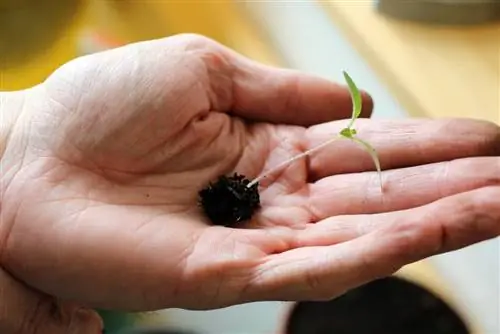
Before the first sowing, it is best to draw up a planting plan. From the end of February/beginning of March, summer vegetables such as tomatoes, cucumbers, peppers, chili and eggplant can be sown or brought forward. You can plant the first seedlings such as early lettuces or cold-tolerant kohlrabi varieties. For a continuous harvest, lettuce and kohlrabi can be replanted every 3-4 weeks. If the night temperatures drop sharply again, it may make sense to cover the young plants with a fleece at night. Radishes and spring radishes can also be sown now, with radishes developing the fastest.
Tip:
If you don't want to experience a nasty surprise from an afterfrost or sudden cold snap, you should get a greenhouse liner. In these DIY greenhouse instructions we show how easy it is to build one yourself.
Summer vegetables
Around mid-May is the best time to plant tomatoes, peppers, eggplants, melons and chili and from the end of May cucumbers in the greenhouse. Tomatoes and cucumbers need a trellis or climbing aid. It is also advisable not to grow nightshade plants such as tomatoes, peppers and eggplant in the same location every year. It's best to take a break from cultivation between each other, of around four years.
Tip:
In principle, tomatoes in particular can be planted in the same location several years in a row. However, they are then more susceptible to diseases.
Autumn and winter vegetables
Fast-growing lamb's lettuce, endive, spinach or winter purslane can be sown in the greenhouse at the beginning of September at the latest. Or you can grow them in bowls and plant them in the now vacant areas from October onwards. This means you can harvest until February. Now is also the right time to sow beetroot and chard, which can be harvested as 'baby beet' or 'baby leaf' after a few weeks. If the outside temperature drops to minus seven degrees or more, a cover with fleece is recommended.
Heat-loving herbs

If you plant tomatoes or cucumbers, a large part of the soil area usually remains free. You can use them, for example, to grow herbs. Among other things, they can prevent irrigation water from splashing from the ground onto the plants, which tomatoes in particular don't like. In addition, thanks to their essential oils, some herbs can keep certain pests away or have a positive or negative influence on each other's growth.
However, not every herb can be grown in greenhouse conditions. Heat-loving herbs such as rosemary, oregano, thyme, basil, cress, marjoram, chervil, coriander and purslane are ideal. Basil should not be planted together with thyme or oregano. While basil has a high water and nutrient requirement, the other two like it rather dry and low in nutrients. Curry herb and various types of mint also feel at home in the greenhouse.
Summer flowers
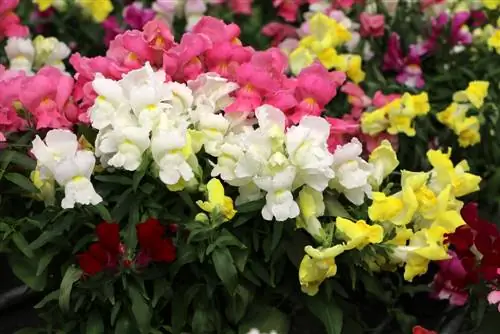
In February/March, when the light intensity increases noticeably, a greenhouse can be used to sow or prefer summer flowers. Of course, this requires appropriate germination temperatures, which vary depending on the species.
Temperatures of 18-20 degrees
At these temperatures, lobelia, busy lilies, ornamental tobacco, cockade flowers, summer carnations, snapdragons, zinnias, spider plants, salvias, delphiniums, carnations, daylilies, spurflowers and columbines germinate.
At least 15 degrees
Summer aster, split flower, levkoje, foxtail, juggler flower and strawflower require a little less heat. Canna, begonia and gloxinia can now also be planted.
At least 12 degrees
At just 12 degrees, chrysanthemums, coneflowers, marigolds, fairy mirrors, maidens in the green and plumes germinate.
Tip:
In April, the first sown flowers can be placed in pots and annual summer flowers such as cup mallow, sunflower or scented rockwort can be sown.
Exotic fruits in the greenhouse
Tomatoes and cucumbers are standard in greenhouses. But a greenhouse can do even more. In addition to local vegetables, you can also grow exotic fruits such as mango, kiwi, banana, limes, figs, lemons or oranges in this way. The selection of fruits depends primarily on the size of the greenhouse and the right temperatures.
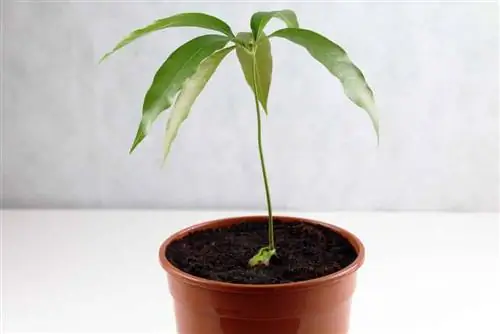
Kiwi, orange, lemon, fig and lime require temperatures of 2-12 degrees. Papaya and passion fruit need a little more warmth with temperatures between 12 and 18 degrees and enough space for climbing. Mango, pineapple, banana and coconut require a lot of space and the most warmth with at least 18 degrees. Even with exotic greenhouse plants, only species with the same conditions or requirements should be planted together.
Tip:
If you prefer flowering greenhouse plants, you can also plant your greenhouse with tropical flowers or trees. These can be, for example, bromeliads, camellias, orchids, oleanders, calla lilies, olives, strelicias, passionflower, agave or aloe vera.

